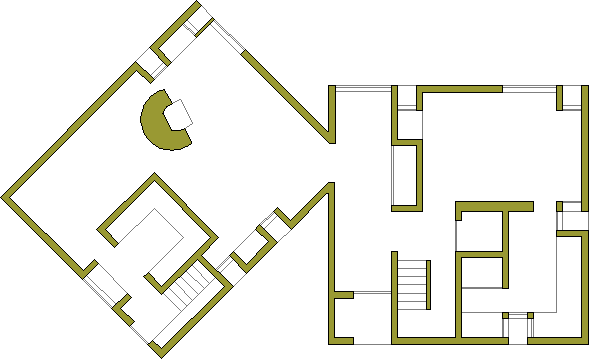2004.07.01 14:57
Modern Trajectory
Why not compose a modern trajectory based on individual buildings/designs and events (such as building expositions, publications, schools, symposiums, etc.) entwined with historical events, instead of dealing with architects themselves as a datum?
Is the course on architecture or is it on architects?
A Venturi and Rauch building of the 1960s, for example, is not the same as a Venturi, Scott Brown & Associates building of now-a-days. The same goes for Gehry's career trajectory. An early Mies building is not the same as a late Mies building (although most late Mies buildings are just like each other). Note what building design Kahn was working on while Wright was designing Beth Sholom Synagogue.
A chronological trajectory of buildings/designs will be much more informative than a more or less speculative list of what architect may have succeeded or followed what other architect.
2004.07.01 15:59
Modern Trajectory
MoMA also had a Japanese Design exhibition in 1954.
The Language of Post-Modern Architecture was first published in 1977.
1966: Complexity and Contradiction in Architecture - Venturi
1966: Architecture of the City - Rossi
Not only were Le Corbusier's executed works always news-worthy, but each consecutive publication of his Complete Works lead to widespread (i.e., global) emulation throughout the field of architecture.
The necessity of rebuilding Europe after W.W.II lead to an enormous proliferation of modern design.
1925: Towards a New Architecture - Le Corbusier.
The coeval-ness of Art Deco and Esprit Nouveau.
The works of Stirling and Gowen as the ultimate manifestation of Russian Constructivism.
Stalinist Architecture as the ultimate manifestation of Piranesi's Ancient Roman fantasies.
| |
2009.07.01 15:36
what is the difference between paradise & utopia?
...I found your intitial query thought provoking in that, as you say, one doesn't really hear about architects designing (a) paradise.
When PG,UB suggested research into landscape design of the Middle Eastern and Islamic world, I began to think about the Alhambra--a fortress/palace/city as paradise.
Regarding heterotopia, for some reason, I began to think of the novel Platform--notions of sex tourism within 'paradise'. Also got out my Foucault Reader and read "Space, Knowledge and Power" where Foucault says a few things about ancient Roman baths and their eventual demise throughout Europe--not exactly places of paradise, but public, social places centered around activities of pleasure.
You say you are planning to design a paradise. Care to share a little more about that?
| |

09070101
| |
09070101 Fisher House domestic architecture Tower of Shadows plans 2186i07
12070101 Mikveh Israel Synagague footprint plan within context 220ci01 b
15070101 analogous buildings plans 2286i08
15070102 Mies van der Hejduk House Quondam roof plan 2450i02
15070101 Herzog & de Meuron Tour Triangle Paris
18070101 NNTC IQ54-65 plans 2413i44
21070101 domicile 1967 House 10: Museum Dominican Motherhouse Saltzman House plans elevations 2197i27
21070102 domicile 1970 House 14 House 15 House II plans elevations 2203i03
21070103 domicile 1971 House in Old Westbury House III Galleratese Housing Block Brant House Douglas House plans elevations 221di03
|